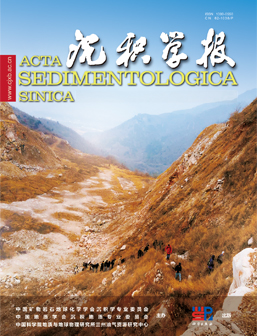Geological and Geochemical Characteristics of Ancient Cold Seep Carbonates in Taiwan area, China
doi: 10.14027/j.issn.1000-0550.2024.063
- Received Date: 2024-04-15
- Available Online: 2024-06-06
-
Key words:
- carbonate /
- ancient cold seep /
- Taiwan area /
- carbon source /
- sedimentary environment /
- macrofauna
Abstract: [Significance] Cold seep activities have a significant impact on marine ecosystems and global climate change, and they are widely developed in the global active and passive continental margins. The fundamental process operating at seeps is the anaerobic oxidation of methane (AOM), mediated by a consortium of anaerobic methanotrophic archaea (ANME) and sulfate-reducing bacteria (SRB). This procedure will increase the alkalinity of pore water, forming a favorable precipitation environment for carbonate minerals. Cold seep carbonates are the products of submarine cold seep activities, and their geological and geochemical characteristics are often used to trace seepage fluid information and sedimentary environment changes. [Progress] The Taiwan Island is located in the collision zone between the Luzon Island Arc of the Philippine Sea Plate and the Eurasian continental margin, which possesses complex geological structures such as extensive faults, providing appropriate conditions for the development of cold seeps. The cold seep carbonates in Taiwan area are mainly developed in Miocene to Pleistocene strata, which are ideal carriers for the study of ancient cold seeps. A relatively detailed study has been conducted on its fundamental geological and geochemical characteristics, including mineralogy, petrology, and carbon and oxygen isotopes. This paper provides a comprehensive analysis of the geological occurrence, mineralogical and petrological characteristics, carbon and oxygen isotopes, rare earth elements geochemistry, and macrofossil contents of cold seep carbonates in Taiwan area. In addition, it explores the fluid seepage activities and depositional environment characteristics recorded by the cold seep carbonates in Taiwan area, combining the geological and geochemical features of cold seep carbonates from other regions globally. [Conclusions and Prospects] Cold seep carbonates in Taiwan area predominantly occur in blocky and chimney-like forms, which indicate two types of seepage activity. The blocky forms indicate prolonged periods of low-flux diffuse seepage, while the chimney-like forms represent shorter periods of high-flux convective seepage. The primary carbonate minerals in cold seep carbonates are dolomite and calcite, with a significant presence of framboidal pyrites. The size of the pyrite grains may be related to the redox conditions during sedimentation. The carbon isotope composition of cold seep carbonates indicates that the primary sources of carbon are biogenic and thermogenic methane, with additional influence from seawater or residual CO2 from methanogenesis. Notably, Pliocene cold seep carbonates exhibit the widest range in carbon isotope values, suggesting a greater diversity of carbon sources, potentially due to the complex geological structures in Taiwan area at that time. Furthermore, the δ18O values of cold seep carbonates from the Miocene to the Pleistocene in Taiwan area exhibit a progressively positive trend, suggesting these carbonates might have undergone a transition from gas hydrate formation to dissociation and release. Geochemical characteristics of rare earth elements illustrate that the sedimentary environment is dominated by reduction. The cold seep macrofossils are dominated by bivalve fossils, while they have few biological species in the Miocene and Pliocene, but more in the Pleistocene, which may be affected by water depth. In order to improve the in-depth understanding of the ancient cold seep systems in Taiwan area, future research can focus on in situ micro-scale carbon and oxygen isotope analysis of cold seep carbonates, Mo element and its isotope analysis of carbonate minerals, as well as the spatial differences in the growth of macrofauna of different genera of Lucinidae family, in conjunction with geochemical analysis.
| Citation: | Geological and Geochemical Characteristics of Ancient Cold Seep Carbonates in Taiwan area, China[J]. Acta Sedimentologica Sinica. doi: 10.14027/j.issn.1000-0550.2024.063 |






 DownLoad:
DownLoad: